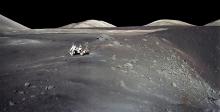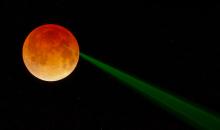Listen to today's episode of StarDate on the web the same day it airs in high-quality streaming audio without any extra ads or announcements. Choose a $8 one-month pass, or listen every day for a year for just $30.
You are here
Moon Trees
A loblolly pine at the Alabama state capitol, a redwood at the California capitol, and Douglas firs at the capitols of Washington and Oregon have something in common: All of them were grown from seeds that went to the Moon.
The seeds were carried by Stuart Roosa, the command module pilot of Apollo 14. It entered lunar orbit 50 years ago today.
Roosa had been a “smoke jumper” for the U.S. Forest Service. The service asked him to carry a few hundred seeds into space, representing five species. He agreed. The seeds remained in orbit with Roosa while crewmates Alan Shepard and Ed Mitchell landed on the Moon.
Back on Earth, the package that held the seeds came open, and they spilled everywhere. Scientists were concerned the seeds might not germinate. But the Forest Service planted more than 400 of them, and almost all of them grew.
As part of the celebration of the American Bicentennial, many of the “Moon trees” were given to cities and states around the country. They were planted with great ceremony — at capitol buildings, universities, and other august locations.
Over the years, seeds or cuttings from them have been planted at other locations. But many of the original trees are gone. They’ve been felled by storms or disease, or by indifference. Others may still be around, but their locations have been forgotten.
Yet several dozen of them are still alive and well — grown from seeds that visited the Moon.
More about Apollo 14 tomorrow.
Script by Damond Benningfield





